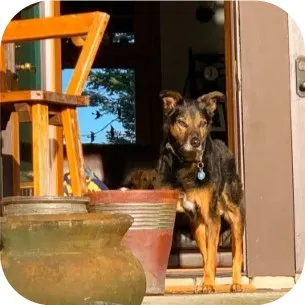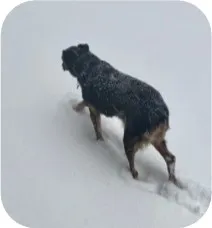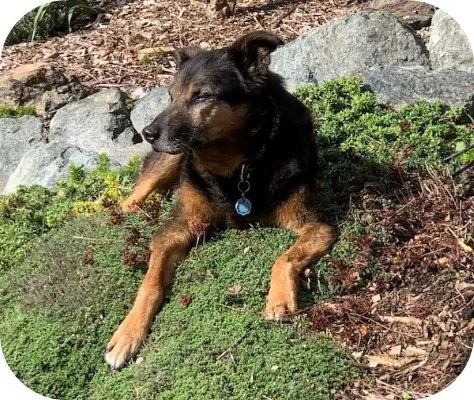For many 16-year-olds, finding a first job that’s both enjoyable and rewarding can be a challenge. If you’re passionate about animals and looking for a way to earn some money while staying active, Dog Walking For 16 Year Olds could be the perfect fit. This guide will walk you through what it takes to become a successful and responsible dog walker, emphasizing the diverse needs of canine companions you might encounter. Dog walking isn’t just about a leash and a stroll; it’s about understanding and caring for each dog uniquely, from energetic puppies to the wise senior dogs who require a gentler touch.
Why Dog Walking is Perfect for Teens
Dog walking offers a unique blend of benefits for young people stepping into the workforce. It’s a fantastic way to develop responsibility, build a good reputation, and stay active, all while enjoying the company of furry friends. The flexibility of setting your own hours can also be a major plus, allowing you to balance work with school and other commitments.
Beyond the financial aspect, walking dogs provides an opportunity to connect with your community and make a real difference in the lives of pets and their owners. You’ll gain valuable experience in time management, client communication, and animal care, all of which are transferable skills that will serve you well in any future endeavor. This role fosters empathy and teaches you to observe and respond to the non-verbal cues of animals, deepening your understanding of canine behavior.
Understanding Your Canine Clients: Diverse Needs for Young Walkers
As a dog walker, you’ll likely encounter dogs of all ages, breeds, and temperaments. Each dog comes with its own set of needs and quirks, and understanding these differences is crucial for providing excellent care and ensuring a safe, enjoyable walk.
Puppies: Bundles of Energy and Learning
Walking puppies is an exercise in patience and energy management. They often have boundless energy but limited attention spans and bladder control. Puppy walks are usually shorter and more frequent, focusing on potty breaks, basic leash training, and socialization. You might need to carry treats for positive reinforcement and be prepared for sudden bursts of play or unexpected accidents. Teaching a puppy good leash manners from a young age can be very rewarding.
Adult Dogs: Varied Energy and Routines
Adult dogs represent the broadest category, with needs that vary significantly by breed, age, and individual personality. Some adult dogs require long, vigorous walks to burn off energy, while others are content with a leisurely stroll around the block. It’s essential to communicate with owners to understand their dog’s typical routine, energy level, and any specific commands or behavioral tendencies. Always be mindful of their strength and ensure you can comfortably handle them on a leash.
Senior Dogs: A Gentle Pace and Special Care
Walking senior dogs demands particular attention, patience, and empathy. As dogs age, they experience changes similar to humans, including reduced mobility, sensory decline, and cognitive shifts. Drawing from the experiences of caring for older pets, here’s what a young dog walker should know:
The Aging Dog’s Pace
Senior dogs generally have significantly reduced exercise needs. While a younger dog might require an hour-long power walk, a senior dog often benefits more from a shorter, slower-paced walk, perhaps around 40 minutes, with plenty of opportunities to sniff and explore without feeling rushed. Their stamina is lower, and they tire more easily.
Navigating Arthritis and Joint Pain
Many older dogs develop arthritis or other joint issues, making movement difficult and painful. Signs can include difficulty standing up or lying down, a stiff gait, or limping. A dog walker should be observant; if a dog struggles to gather its legs to stand or takes small, slow steps backward to lie down, it could indicate joint pain. For such dogs, walks should be on soft, even surfaces, avoiding stairs or steep inclines. Understanding that these dogs might be on supplements like Adequan, fish oil, or glucosamine, or even pain relief like tramadol, can help you appreciate their needs. Gentleness and patience are key to ensuring their comfort during walks.
Cognitive Changes and Disorientation
Just like humans, some senior dogs experience cognitive decline, sometimes referred to as canine dementia. This can manifest as disorientation, where a dog might stand staring into space for several minutes or walk back and forth aimlessly between doors as if confused. A dog walker should be patient and reassuring in these situations. Gently guiding the dog or speaking to them can sometimes help them “snap out of it.” Maintaining a consistent route can also help minimize confusion.
 A senior dog standing still, appearing to stare into the distance, a common sign of disorientation
A senior dog standing still, appearing to stare into the distance, a common sign of disorientation
Hearing and Vision Loss
Senior dogs may also experience hearing or vision loss. If a dog ignores a command, it might not be stubbornness but simply an inability to hear. When communicating with a senior dog, try to get their attention with a gentle touch or hand movements before speaking. Approaching them slowly and speaking softly can prevent startling them.
Incontinence Awareness
Fecal or urinary incontinence can occur in senior dogs due to weakened muscles or neurological issues. As a dog walker, you should be prepared for the possibility of accidents. If a dog has an accident during a walk, clean it up promptly and inform the owner. Understanding that this is often an involuntary behavior, not a sign of poor training, is important for showing empathy.
 A determined senior dog walking through light snow, showing resilience despite age
A determined senior dog walking through light snow, showing resilience despite age
Appetite and Hydration
While not directly related to walking, observing a senior dog’s appetite or water intake can be an important piece of information for their owner. Senior dogs sometimes eat less as they age. Always ensure you carry water for any dog on a walk, especially on warmer days, and offer it regularly.
Embracing the changes in senior dogs means adjusting your approach. Their slower pace and specific needs require understanding and kindness. While it can be heartbreaking to see a dog struggle, the bond you build with a senior dog through gentle care can be incredibly rewarding. They may not need vigorous activity, but they cherish companionship and a peaceful presence.
 A relaxed senior dog enjoying a sunbath outdoors, sniffing the air instead of vigorous activity
A relaxed senior dog enjoying a sunbath outdoors, sniffing the air instead of vigorous activity
Essential Safety Tips for 16-Year-Old Dog Walkers
Safety is paramount for both you and the dogs you walk. A responsible dog walker always prioritizes a safe environment and secure handling.
Leash Manners and Control
Always use appropriate leashes and harnesses provided by the owner. Ensure they are securely fitted and in good condition. Maintain a firm but gentle grip on the leash, keeping the dog close, especially in busy areas. Never let a dog off-leash unless explicitly instructed by the owner and you are in a secure, fenced area.
Environmental Awareness
Be aware of your surroundings at all times. Look out for potential hazards like broken glass, toxic plants, or aggressive dogs. Pay attention to the weather; extreme heat or cold can be dangerous for dogs. Understand the specific dangers that certain breeds or senior dogs might face in different conditions. For example, brachycephalic (flat-faced) breeds are prone to overheating, and senior dogs with arthritis will struggle on icy pavements.
Emergency Preparedness
Before your first walk, make sure you have the owner’s emergency contact information and their veterinarian’s details. Know if the dog has any medical conditions or allergies. Carry a small first-aid kit for minor cuts or scrapes. In case of an emergency, remain calm and follow the owner’s instructions or seek immediate veterinary care if necessary.
Communication with Owners
Clear and consistent communication with dog owners is vital. Provide updates on how the walk went, any observations about the dog’s behavior, and if they completed their potty breaks. If you notice any unusual behavior, changes in appetite, or signs of discomfort, inform the owner immediately. Open communication builds trust and ensures the best care for their beloved pet.
Setting Up Your Dog Walking Service
Starting your own dog walking service as a 16-year-old can be an exciting venture. With a clear plan, you can build a successful and reputable business.
Finding Your First Clients
Start by offering your services to family, friends, and neighbors. Word-of-mouth is powerful in local communities. You can also create simple flyers to post in local pet stores or community centers. Websites and apps like Rover can also connect you with potential clients, though these often have age requirements that may need parental oversight for 16-year-olds.
Pricing Your Services
Research the price for dog walking per hour in your area to ensure your rates are competitive but fair. Consider factors like the length of the walk, the number of dogs, and any additional services like feeding or administering medication. Many dog walkers charge a set dog walking per hour rate, with discounts for multiple walks or dogs.
Creating a Reliable Schedule
Consistency is key in dog walking. Establish a clear dog walker schedule that works for both you and your clients. Be punctual and reliable. If you need to cancel or reschedule, give owners as much notice as possible. A reliable schedule builds trust and ensures dogs receive their much-needed exercise.
The Importance of Parental Support
As a 16-year-old, it’s crucial to involve your parents or guardians. They can help with legal considerations, transportation, and provide guidance as you navigate your new responsibilities. Some clients may also feel more comfortable knowing a parent is involved, especially when it comes to agreements and payments.
 A happy senior dog looking directly at the camera with a gentle, friendly expression
A happy senior dog looking directly at the camera with a gentle, friendly expression
Conclusion
Becoming a dog walker as a 16-year-old is a fantastic opportunity to combine your love for animals with earning potential and personal growth. By understanding the diverse needs of dogs, especially the specific requirements of senior companions, and adhering to strict safety protocols, you can provide an invaluable service. This role fosters responsibility, empathy, and a deep appreciation for our canine friends. Embrace the challenges and rewards, adjust to each dog’s “new normal,” and cherish the unique bond you build. Get out there, walk those furry friends, and enjoy every moment of your journey as a responsible young dog walker!
